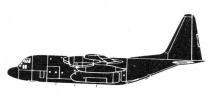Incident Overview

Description
Flight EXC 403 from Pajala to Lule was planned without passengers. Since the co-pilot was shortly to undergo an Operators Proficiency Check and the commander had long flying experience, including as an instructor, the commander decided to take the opportunity to have the co-pilot train flying with simulated engine failure. The takeoff from Pajala was at 17.57 hrs with the co-pilot as Pilot Flying. During the climb the flight crew simulated an engine failure to which the co-pilot reacted properly. It was decided to practise flying with simulated engine failure during the landing as well. During the approach to Lule Airport when the aircraft was at an altitude of about 3500 feet the commander reduced thrust on the right engine. The co-pilot understood that the whole landing, including touchdown, would be with one engine on reduced thrust. However, the commanders intention was to restore normal thrust on the right engine before touch-down. The co-pilot flew the aircraft in a right turn to runway 32. The final was entered with a somewhat higher glide angle than normal. Shortly after the aircraft had crossed the runway threshold and was about 5 metres above the runway, both the co-pilot and the commander felt how the aircraft suddenly yawed and rolled to the right. Despite application of full aileron and rudder the pilots were unable to stop the aircrafts uncontrolled motion. This continued until the right wing tip hit the ground. The fuselage then struck the ground. The aircraft slid on its belly about 50 metres alongside the runway before stopping. The accident was caused by shortcomings in the companys quality assurance system, operational routines and regulations. These contributed to the facts that: – the commander considered he was able to serve as a flying instructor on an aircraft type and in a flight situation for which he was neither qualified nor authorised, – the pilots lacked necessary familiarity with the aircraft types special flight characteristics during asymmetrical thrust, and – the pilots lacked familiarity with the regulations in force for flying training.
Primary Cause
Insufficient Quality Assurance System, Operational Routines, and RegulationsInsufficient Quality Assurance System, Operational Routines, and RegulationsShare on:





